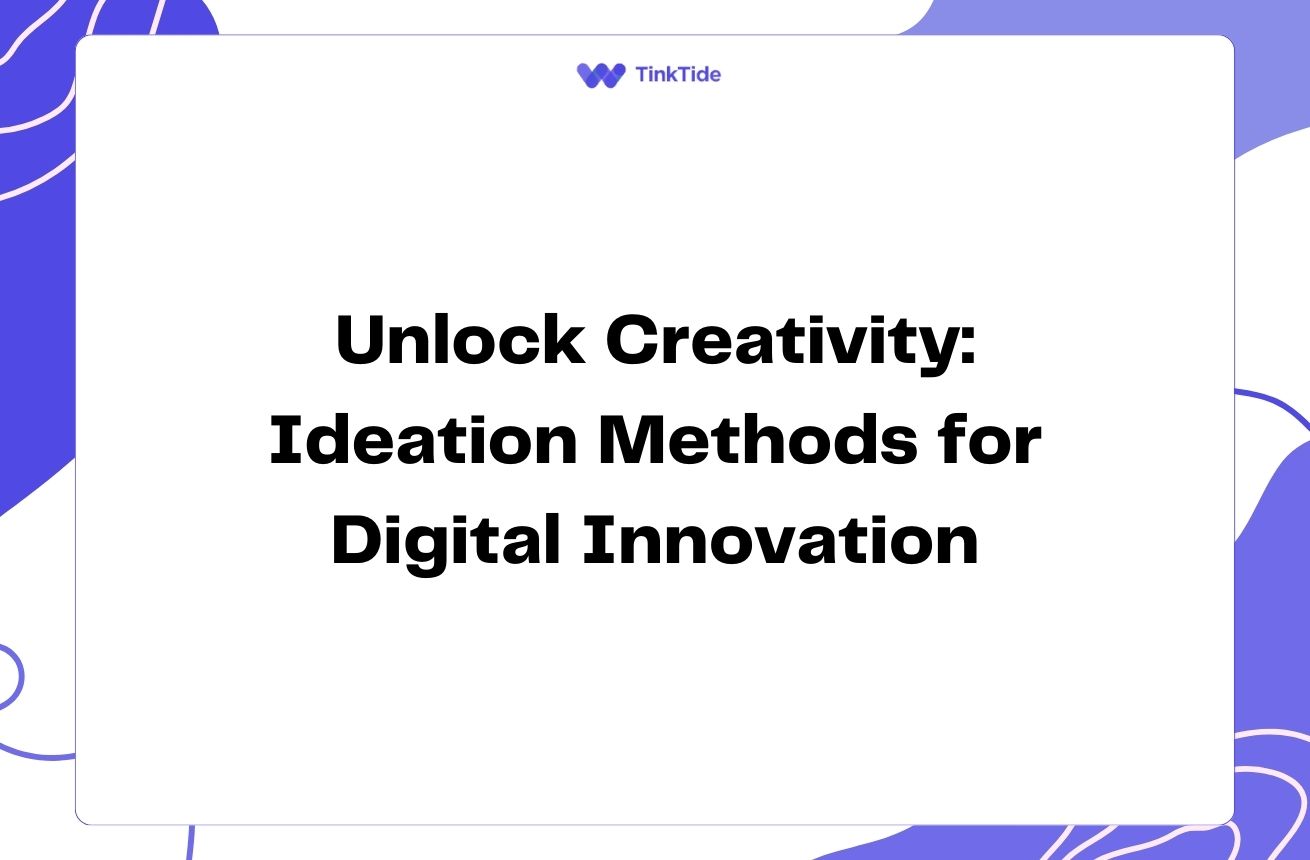Advanced Brainstorming Methods for Generating Unique Ideas
The Power of Advanced Brainstorming
Brainstorming is a crucial skill for anyone looking to generate innovative ideas for their projects. While traditional methods like group discussions have their place, advanced brainstorming techniques can help you unlock new levels of creativity and produce truly unique concepts.
In this article, we'll explore several powerful brainstorming methods that can revolutionize your idea generation process. These techniques are designed to break through mental barriers, encourage out-of-the-box thinking, and help you tap into your full creative potential.
By incorporating these advanced methods into your brainstorming sessions, you'll be better equipped to tackle complex problems, develop groundbreaking solutions, and stay ahead of the competition in your field.
Mind Mapping: Visualizing Connections
Mind mapping is a powerful visual brainstorming technique that helps you explore connections between ideas. Start with a central concept and branch out with related thoughts, creating a web of interconnected ideas.
To create a mind map, follow these steps:
- Write your main topic or problem in the center of a blank page
- Draw branches from the center, each representing a subtopic or related idea
- Add smaller branches to each subtopic, exploring further connections
- Use colors, symbols, and images to enhance visual appeal and memory retention
Mind mapping tools like MindMeister or XMind can help you create digital mind maps easily. This method is particularly effective for visual thinkers and can reveal unexpected connections between ideas.
SCAMPER: A Systematic Approach to Innovation
SCAMPER is an acronym that stands for Substitute, Combine, Adapt, Modify, Put to another use, Eliminate, and Reverse. This method provides a structured approach to generating new ideas by encouraging you to think about your problem or product from different angles.
To use the SCAMPER technique, ask yourself questions related to each letter of the acronym. For example:
- Substitute: What materials or resources can be replaced?
- Combine: How can you merge two or more elements of your project?
- Adapt: What ideas from other fields can be applied to your problem?
- Modify: How can you alter the shape, color, or functionality?
- Put to another use: Can your product or idea serve a different purpose?
- Eliminate: What features or steps can be removed to simplify?
- Reverse: How would your idea work if you reversed the process or order?
By systematically applying these prompts, you can uncover innovative solutions and improvements to your original concept. The SCAMPER technique is particularly useful for product development and process improvement.
Six Thinking Hats: Exploring Multiple Perspectives
Developed by Edward de Bono, the Six Thinking Hats method encourages participants to look at a problem from six different perspectives. Each 'hat' represents a different mode of thinking:
- White Hat: Focus on available data and information
- Red Hat: Express emotions and intuitions about the idea
- Black Hat: Identify potential risks and weaknesses
- Yellow Hat: Explore benefits and positive aspects
- Green Hat: Generate creative solutions and alternatives
- Blue Hat: Manage the thinking process and draw conclusions
By 'wearing' each hat in turn, you ensure that all aspects of an idea are considered. This method helps overcome personal biases and encourages a more comprehensive evaluation of ideas. Learn more about the Six Thinking Hats technique to implement it effectively in your brainstorming sessions.
Random Word Association: Sparking Unexpected Connections
The random word association technique involves introducing unrelated words or concepts into your brainstorming process to spark new ideas. This method can lead to unexpected connections and innovative solutions.
To use this technique:
- Choose a random word (use a dictionary, word generator, or pick an object in your environment)
- List attributes or associations related to the random word
- Force connections between these attributes and your original problem or project
- Explore how these new connections might lead to innovative solutions
This method is particularly effective for breaking through creative blocks and generating truly unique ideas. Tools like Random Word Generator can help you quickly find words to use in this exercise.
Reverse Brainstorming: Flipping the Problem
Reverse brainstorming involves approaching your problem from the opposite direction. Instead of asking how to solve a problem, you ask how to cause it or make it worse. This counterintuitive approach can lead to valuable insights and innovative solutions.
To use reverse brainstorming:
- Clearly state your problem or goal
- Reverse the problem (e.g., 'How to improve customer satisfaction' becomes 'How to make customers unhappy')
- Brainstorm ideas for the reversed problem
- Reverse these ideas back to find potential solutions to your original problem
This method is particularly useful for identifying root causes of problems and developing preventive measures. It can also help you see your challenge from a fresh perspective, leading to more creative solutions.
Implementing Advanced Brainstorming Methods
To get the most out of these advanced brainstorming techniques, consider the following tips:
- Create a judgment-free environment where all ideas are welcome
- Combine multiple techniques in a single session for diverse perspectives
- Use digital tools to facilitate remote brainstorming and idea sharing
- Set clear goals and time limits for each brainstorming exercise
- Follow up on promising ideas with further research and development
Remember, the key to successful brainstorming is to generate a large quantity of ideas without immediate judgment. Evaluation and refinement should come after the initial ideation phase.
Address common questions
Here are some frequently asked questions about advanced brainstorming methods:
How long should a brainstorming session last?
The ideal length can vary, but most effective sessions last between 30 minutes to an hour. Shorter sessions help maintain focus and energy, while longer ones may be needed for complex problems. Consider using multiple short sessions spread over time for best results.
Can these methods be used for individual brainstorming?
Absolutely! While many of these techniques work well in groups, they can be adapted for individual use. Solo brainstorming allows for deeper personal reflection and can be especially useful when you need to generate ideas quickly without group logistics.
How do I choose the right brainstorming method for my project?
Consider your project's nature, team dynamics, and desired outcomes. Mind mapping works well for visual thinkers, SCAMPER is great for product improvements, and Six Thinking Hats is ideal for comprehensive analysis. Experiment with different methods to find what works best for your team and project type.
How can I encourage participation in group brainstorming sessions?
Create a supportive environment where all ideas are welcomed without criticism. Use icebreakers to get everyone comfortable, assign roles to ensure equal participation, and consider anonymous idea submission methods for those who may be hesitant to speak up.
What should I do with the ideas generated after brainstorming?
After the session, organize and categorize the ideas. Evaluate them based on feasibility, impact, and alignment with your goals. Create an action plan for the most promising ideas, assigning responsibilities and timelines for further development or implementation.
Provide additional resources
Creativity Techniques
A comprehensive collection of creativity and brainstorming techniques from MindTools
IDEO's Design Kit
A set of design thinking methods that can enhance your brainstorming process
Mural
A digital workspace for visual collaboration, perfect for remote brainstorming sessions
The Creativity Workshop
Offers workshops and resources to enhance creative thinking skills
Lateral Thinking by Edward de Bono
Books on lateral thinking techniques that can complement your brainstorming efforts
Unleash Your Creative Potential
Advanced brainstorming methods offer powerful tools to generate unique and valuable ideas for your projects. By incorporating techniques like mind mapping, SCAMPER, Six Thinking Hats, random word association, and reverse brainstorming, you can break through creative barriers and uncover innovative solutions.
Remember that effective brainstorming is a skill that improves with practice. Don't be afraid to experiment with different methods and adapt them to suit your specific needs and working style.
As you master these techniques, you'll find yourself better equipped to tackle complex challenges, drive innovation in your field, and bring fresh perspectives to every project you undertake. Embrace the power of advanced brainstorming and watch your creativity soar to new heights!
Elevate Your Brainstorming Game
Ready to revolutionize your idea generation process? Try our advanced brainstorming toolkit!
Start Your Free Trial

